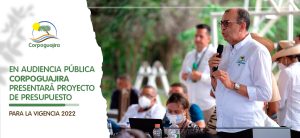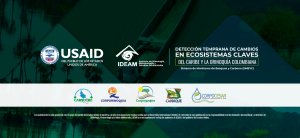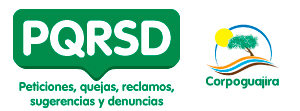M-m
Magnesium. chemical element of the group II of the periodic table or alkaline earth. Atomic number 12, atomic mass 24.312. It is a very dense metal, sparkly, ductile and malleable. In nature it is in the form of salts such as chloride, sulfate, carbonate and silicate. It has chemical and industrial applications. It is an essential element for plants, in which it is part of the photosynthetic pigment chlorophyll.
Spring. surface upwelling water from underground sources which occurs for cracks or changes in lithology where the topographic surface intersects the water table.
Manganese. chemical element of group VIII of the periodic table. Atomic number 25, atomic mass 54.938. It is a gray metal, hard. Naturally it occurs in several minerals as pyrolusite or manganese dioxide (MnO2). It has industrial applications in metallurgy and chemical industry. It is necessary for plants as micronutrient. Símbolo Mn.
Mangrove swamp: Ecosystem characteristics, very complex it found in some tropical coasts. It can be said that is the forest of the tropical coasts. It is one of the most productive ecosystems on the planet, It protects the coast and provides a habitat for diverse species of plants and animals.
Marisma. Zone seasonally flooded by the contributions of water pipes and dry in summer. marshland of distinguished saltwort plant, the driest, it becomes waterlogged in the rainy season, characterized by the presence of halophilic plants, and a salt marsh castanet and bayunco, which it remains flooded for half the year and dry in summer. The marshland is seat of important bird populations, including numerous species wintering.
decantable matter. undissolved solids water, separable therefrom by gravity.
Suspended solids. They consist of solid particles floating within the water. Depending on the particle size, They can be divided into those which are able to form stable suspensions in water even at rest (sols) and only found in suspension when water is moving.
Matorral. Vegetation woody plants of small size, sometimes it is the climax vegetation (climate or edaphic) and are often regressive vegetation caused degradation Mediterranean forest felling, crop abandonment, grazing or fire. There are specific ways to scrub like alpine scrub floor, the subdesert, halophilic and gypsicolous, the coastal dunes and wetlands.
Arithmetic average. statistical value of a frequency distribution defined by the sum of the measured values, divided by their number.
Median. statistical value of a frequency distribution defined as the value that divides the package into two populations with the same number of elements.
Real-Time Measurements. Measurements by remote stations or booths equipped with scanners that automatically continuously measure the composition of the gases or liquids in contact with them. Data is transmitted automatically and at that moment a control center.
Environment: It is the set of natural physical factors, social, cultural, economic and aesthetic interacting, with the individual and the society they live, determining form, character, relationship and survival.
Megawatt. Unit of power equivalent to 1 million watts. Abreviatura Mw.
Mercury. chemical element from group VIII, atomic number 80 and atomic mass 200.59. Because of its low melting point (-38,84ºC) It is the only liquid metal at room temperature. In nature it occurs as sulphide (cinnabar). It has technical scientific and industrial applications (amalgams, manufacture of devices such as thermometers and barometers, mercury lamps). It is a highly toxic heavy metal that accumulates in organisms through food chains as methylmercury, damaging the nervous system. En Minamata (Japan), the mercury contamination of people by eating contaminated fish produced a disease, including fatal cases, described as Minamata disease. Symbol Hg.
Meridiano. In the Earth's surface, considered spherical, circle passing through the poles. Of particular significance is the meridian length. As such is used by a broad consensus of Greenwich.
mesophytic. Vegetation in temperate areas.
heavy metal. chemical elements of the group of metals, with higher density 4.5 g/cm³ and high atomic mass, as cadmium, copper, chrome, mercury, lead, etc. as contaminants, are a group of substances that are metabolized poorly and having toxicity to living beings, including man.
Methane. It is the simplest hydrocarbon, product of anaerobic decomposition. components, inter alia, natural gas and biogas. It is with carbon dioxide and nitrogen oxides the main cause of greenhouse. Formula CH4.
Square meter. Unit area equivalent to the surface of a square 1 Metro side. Abbreviation m².
Cubic meter. Unit volume equivalent volume of a cube of 1 edge meter. Abbreviation m³.
Metro. Unit of length equal to 1,650,763.76 times the wavelength of the orange line krypton isotope Kr 86 in the void. It roughly corresponds to the ten-millionth part of the quadrant of the earth meridian passing through Paris. Abbreviation m.
Microgramo. Unit mass. Milmillonésima the kg. Abbreviation mg.
Microsiemens. Unit electrical conductance. Milmillonésima part of siemens. Abbreviation mS.
Milibecquerelio. Unit radioactive activity. It is the thousandth part of becquerel. Abreviatura mBq.
milligrams. Unit mass. Thousandth of a gram. Abbreviation mg.
Milliliter. Unit capacity. Thousandth of a liter. Abbreviation ml.
Millimeter. Unit length. Thousandth of a meter. Abbreviation mm.
Mm of rainfall. Unit amount of precipitation collected. One millimeter equals precipitation 1 liter per square meter. Abbreviation mm.
Miliohmio. Electrical resistance unit. Thousandth Ohm. Abreviatura Mohm.
Milisiemens. Unit electrical conductance. Thousandth of the Siemens. Abbreviation mS.
Milisievert. Unit radiation dose equivalent. Thousandth of a Sievert. Abbreviation mSv.
mine. Exploitation, based wells, perforations and galleries or open air, a mineral.
mineral energy. Mineral exploited as raw material for fuel.
metallic mineral. Mineral exploited for the extraction of metals.
Megapartes. Mineral exploited for purposes other than metal extraction.
Mineral. Solid Natural defined chemical composition and crystallization fixed.
ecological modernization: Doctrine and practice that advocates the introduction of new technologies that respect the environment in the process of modernization of third world economies, or technological retrofits rich countries.
Carbon monoxide. colorless gas, odorless and tasteless, produced in combustion of organic substances. It is a toxic substance for its ability to bind to hemoglobin, respiratory blood pigment, preventing oxygen capture and transport. Formula CO.
Nitrogen monoxide. colorless gas, somewhat water soluble, very irritating and toxic. Formula NO.
Monte. Uncultivated areas covered with arboreal plant, shrub or bush.
Natural monuments. They are spaces or elements of nature basically consist notorious formations uniqueness, rarity or beauty, that deserve special protection. They are also considered Natural Monuments, geological formations, the paleontological and other elements of the gea that meet a particular interest in the uniqueness and importance of their scientific values, cultural or scenic.
Natural movement of the population. The statistics of Natural Population Movement basically refer to births, marriages and deaths.
mosses. Group plants bryophytes. They are green plants, criptógamas (lack conducting vessels and flowers). They have a life cycle with clear alternation of generations (gametophyte haploid y esporofito diploide). They are freshwater and terrestrial plants growing small bearing surfaces upholstering.































Leave a reply
I am sorry, you should be connected to post a comment.